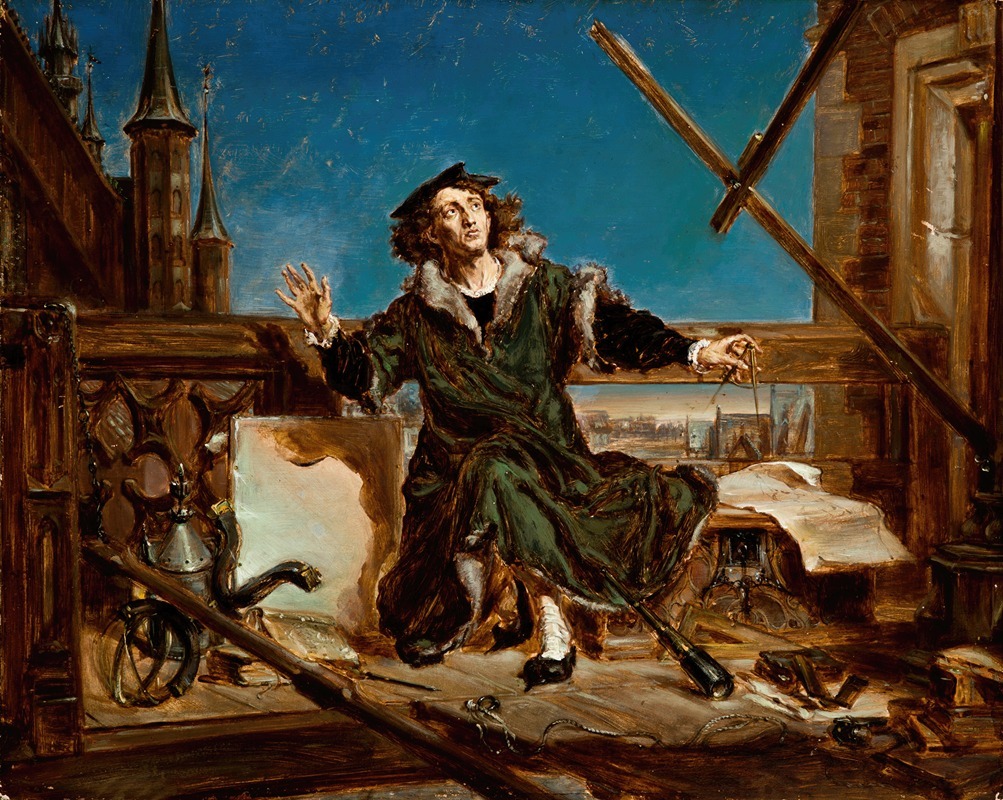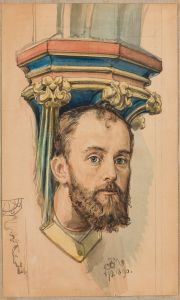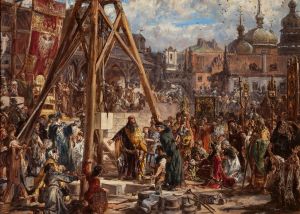
Nicolaus Copernicus
A hand-painted replica of Jan Matejko’s masterpiece Nicolaus Copernicus, meticulously crafted by professional artists to capture the true essence of the original. Each piece is created with museum-quality canvas and rare mineral pigments, carefully painted by experienced artists with delicate brushstrokes and rich, layered colors to perfectly recreate the texture of the original artwork. Unlike machine-printed reproductions, this hand-painted version brings the painting to life, infused with the artist’s emotions and skill in every stroke. Whether for personal collection or home decoration, it instantly elevates the artistic atmosphere of any space.
"Nicolaus Copernicus" is a renowned painting by the Polish artist Jan Matejko, completed in 1873. This artwork is a significant piece in the canon of Polish art, capturing the essence of the astronomer Nicolaus Copernicus, who is best known for formulating a model of the universe that placed the Sun rather than the Earth at its center. This heliocentric theory was revolutionary at the time and laid the groundwork for modern astronomy.
Jan Matejko, a prominent figure in Polish art, is celebrated for his historical paintings that often depict pivotal moments in Polish history. His work is characterized by meticulous attention to detail and a deep sense of national pride. In "Nicolaus Copernicus," Matejko portrays the astronomer not just as a scientist but as a visionary thinker whose ideas challenged the conventional wisdom of his time.
The painting depicts Copernicus standing on a rooftop in Frombork, Poland, where he spent many years of his life. He is shown gazing at the sky, with a celestial globe beside him, symbolizing his groundbreaking work in astronomy. The backdrop of the painting features the towers of the Frombork Cathedral, where Copernicus worked and conducted his observations. This setting is historically significant as it was in Frombork that Copernicus developed his heliocentric theory.
Matejko's portrayal of Copernicus is both idealized and symbolic. The astronomer is depicted as a solitary figure, emphasizing his role as a pioneer who stood apart from the mainstream scientific community of his time. The painting captures a moment of contemplation and discovery, reflecting Copernicus's intellectual courage and his contribution to the Scientific Revolution.
"Nicolaus Copernicus" by Jan Matejko is housed in the Jagiellonian University Museum in Kraków, Poland. It remains an important cultural artifact, not only for its artistic merit but also for its representation of a key figure in the history of science. The painting is a testament to Matejko's skill in capturing the spirit of historical figures and events, and it continues to be admired for its historical accuracy and emotional depth.
Matejko's work has played a significant role in shaping the Polish national identity, and "Nicolaus Copernicus" is no exception. By immortalizing Copernicus in this painting, Matejko contributed to the broader recognition of Copernicus's achievements and his enduring legacy in the field of astronomy. The painting serves as a reminder of the power of human curiosity and the relentless pursuit of knowledge that drives scientific progress.

















